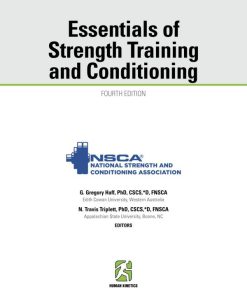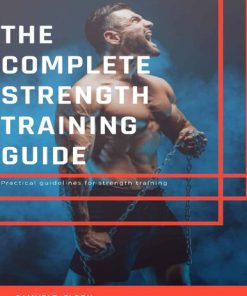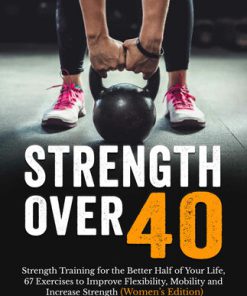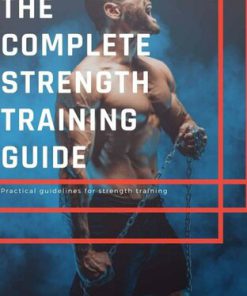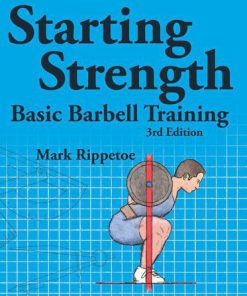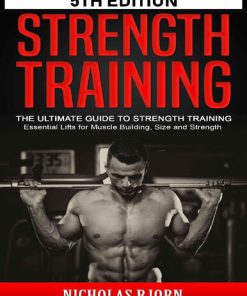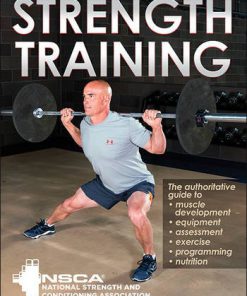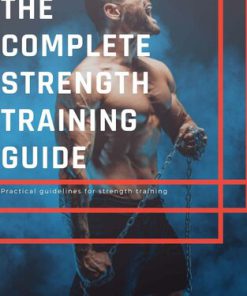Science and Practice of Strength Training 3rd Edition by Vladimir Zatsiorsky, William Kraemer, Andrew Fry 1492592005 9781492592006
$50.00 Original price was: $50.00.$25.00Current price is: $25.00.
Science and Practice of Strength Training 3rd Edition by Vladimir M. Zatsiorsky, William J. Kraemer, Andrew C. Fry – Ebook PDF Instant Download/DeliveryISBN: 1492592005, 9781492592006
Full download Science and Practice of Strength Training 3rd Edition after payment.
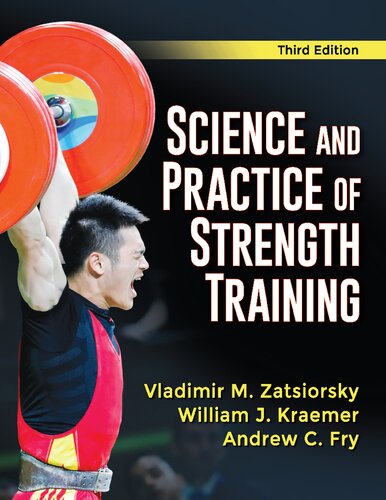
Product details:
ISBN-10 : 1492592005
ISBN-13 : 9781492592006
Author: Vladimir M. Zatsiorsky, William J. Kraemer, Andrew C. Fry
Science and Practice of Strength Training is a favorite book among strength and conditioning professionals. Now in a third edition, it offers upgraded artwork, updates based on current science, and new information to enhance the practical application of the concepts presented. A new coauthor, Dr. Andrew Fry, joins the already-popular author team of Dr. Vladimir Zatsiorsky and Dr. William Kraemer to make this third edition even better than its predecessors. Together the authors have trained more than 1,000 elite athletes, including Olympic medal winners, world champions, and national record holders. Influenced by both Eastern European and North American perspectives, their experience and expertise are integrated into solid principles, practical insights, and directions based on scientific findings. Science and Practice of Strength Training, Third Edition, shows that there is no single program that works for everyone, at all times and in all conditions. It addresses the complexity of strength training programs while providing straightforward approaches to take under specific circumstances. Those approaches are backed with physiological concepts, ensuring readers gain a full understanding of the science behind the practice of strength training. In addition, the authors provide examples of strength training programs to demonstrate the principles and concepts they explain in the book.
Science and Practice of Strength Training 3rd Table of contents:
1. Basic Concepts of Training Theory
Adaptation as a Main Law of Training
Generalized Theories of Training
Training Effects
Summary
2. Task-Specific Strength
Elements of Strength
Determining Factors: Comparison Across Tasks
Summary
3. Athlete-Specific Strength
Muscle Force Potential (Peripheral) Factors
Neural (Central) Factors
Taxonomy of Strength
Summary
Part II: Concepts of Strength Training
4. Training Intensity
Measurement Techniques
Exercising With Different Resistance
Training Intensity of Elite Athletes
Optimal Training Intensities From Comparative Research
Methods of Strength Training
Summary
5. Timing in Strength Training
Structural Units of Training
Short-Term Planning
Medium-Term Planning (Periodization)
Periodized Programming Models
Summary
6. Exercises Used for Strength Training
Classification
Exercise Selection for Beginning Athletes
Exercise Selection for Qualified Athletes
Additional Types of Exercises Used for Strength Training
Experimental Methods of Strength Training
Breathing During Strength Training
Summary
7. Velocity in the Weight Room
How to Measure Velocity
Considerations When Testing
Measuring High-Velocity Lifts in the Weight Room
Slow-Velocity Concentric Resistance Exercise
Slow-Velocity Eccentric Resistance Exercise
Velocity-Related Assessments in the Weight Room
Training Method Variations and Weight Room Velocity
Using Lifting Velocity to Determine Training Load and Volume
Summary
8. Injury Prevention
Factors Contributing to Increased Injury Risks in the Weight Room
Training Rules to Avoid Injury
Lower Back Pain and Injury
Biomechanical Properties of Intervertebral Discs
Mechanical Load Affecting the Intervertebral Discs
Injury Prevention to the Lumbar Region
Summary
9. Overreaching, Overtraining, and Recovery
Training Monotony and Variation
Types of Resistance Exercise
Psychology of Resistance Exercise Overtraining
Speed Is Very Sensitive
Lifting Power Decrements
Vertical Jump
Rate of Force Development
Strength Decrements
So Which Performance Tests?
Physiology of Resistance Exercise Overtraining
Sequence of Performance Impairments
Summary
10. Monitoring Athletes in the Weight Room
Purpose of Testing
Who Is the Tester?
What Is Monitored?
Practical Considerations Related to Assessment
Monitoring Tests
Analyzing and Reporting Results
Summary
11. Goal-Specific Strength Training
Developing a Profile of Target Goals
Evidence-Based Practice
Testing and Monitoring Progress
Strength Performance
Power Performance
Muscle Mass
Endurance Performance
Injury Prevention
Summary
Part III: Strength Training for Specific Populations
12. Strength Training for Women
Coaching Style Is Important
The Need for Strength Training for Women in Sports
Benefits and Myths of Strength Training for Women
Trainable Characteristics of Muscle
Development of Lean Tissue Mass
Physiological Contrasts Between Women and Men
Strength Training Guidelines for Women Athletes
Incidence of Injury
Menstrual Cycle and Strength Training
The Female Athlete Triad
Summary
13. Strength Training for Young Athletes
Safety and Strength Training for Young Athletes
Types of Musculoskeletal Injuries
Primary Factors in Avoiding Injury
When to Start
Benefits of Strength Training for Young Athletes
Myths of Strength Training for Children
Strength Training Guidelines for Young Athletes
Long-Term Athletic Development
Summary
14. Strength Training for Senior Athletes
Age and Its Effects on Strength and Power
Training for Strength Gains
Training for Muscular Power
Nutrition, Aging, and Exercise Challenges
Recovery From Resistance Exercise
Strength Training and Bone Health
Strength Training Guidelines for Senior Athletes
People also search for Science and Practice of Strength Training 3rd:
science and practice of strength training 3rd edition pdf
science and practice of strength training 3rd edition
science and practice of strength training free pdf
science and practice of strength training pdf free download
science and practice of strength training second edition
Tags: Science, Practice, Strength Training, Vladimir Zatsiorsky, William Kraemer, Andrew Fry
You may also like…
Relationships & Lifestyle - Exercise & Fitness
Essentials of Strength Training and Conditioning 4th Edition With Web Resource Haff
Hobbies & Games - Bodybuilding
The Complete Strength Training Guide Practical guidelines for strength training Floril
Hobbies & Games - Bodybuilding
Hobbies & Games - Bodybuilding
The Complete Strength Training Guide Practical guidelines for strength training Floril
Relationships & Lifestyle - Exercise & Fitness
Hobbies & Games - Bodybuilding
20 HOME STRENGTH TRAINING Best Exercise to Burn Fats Build Muscles Boost Strength and Stamina Jann
Relationships & Lifestyle - Exercise & Fitness
Relationships & Lifestyle - Exercise & Fitness
Hobbies & Games - Bodybuilding
The Complete Strength Training Guide Practical guidelines for strength training Floril




